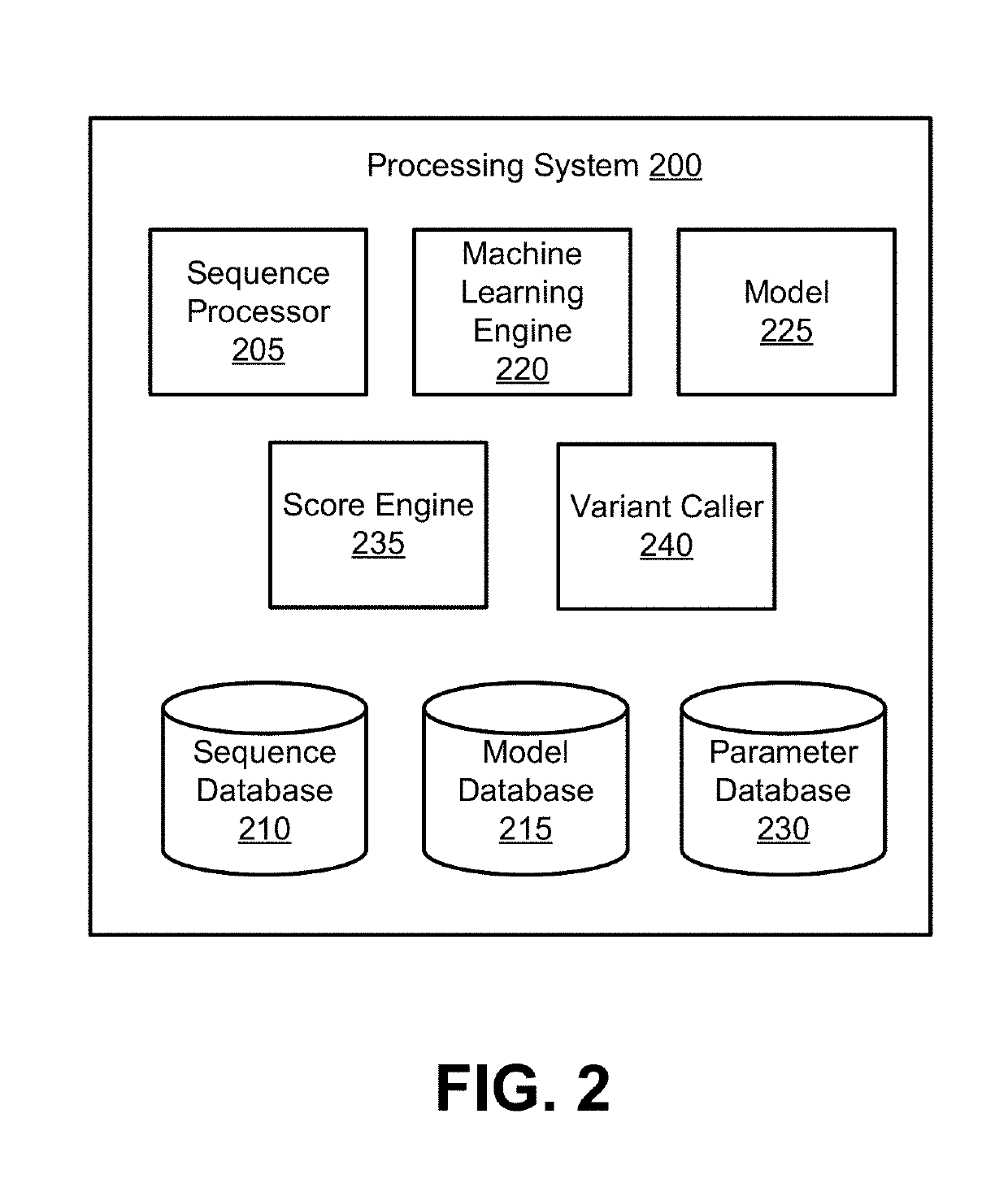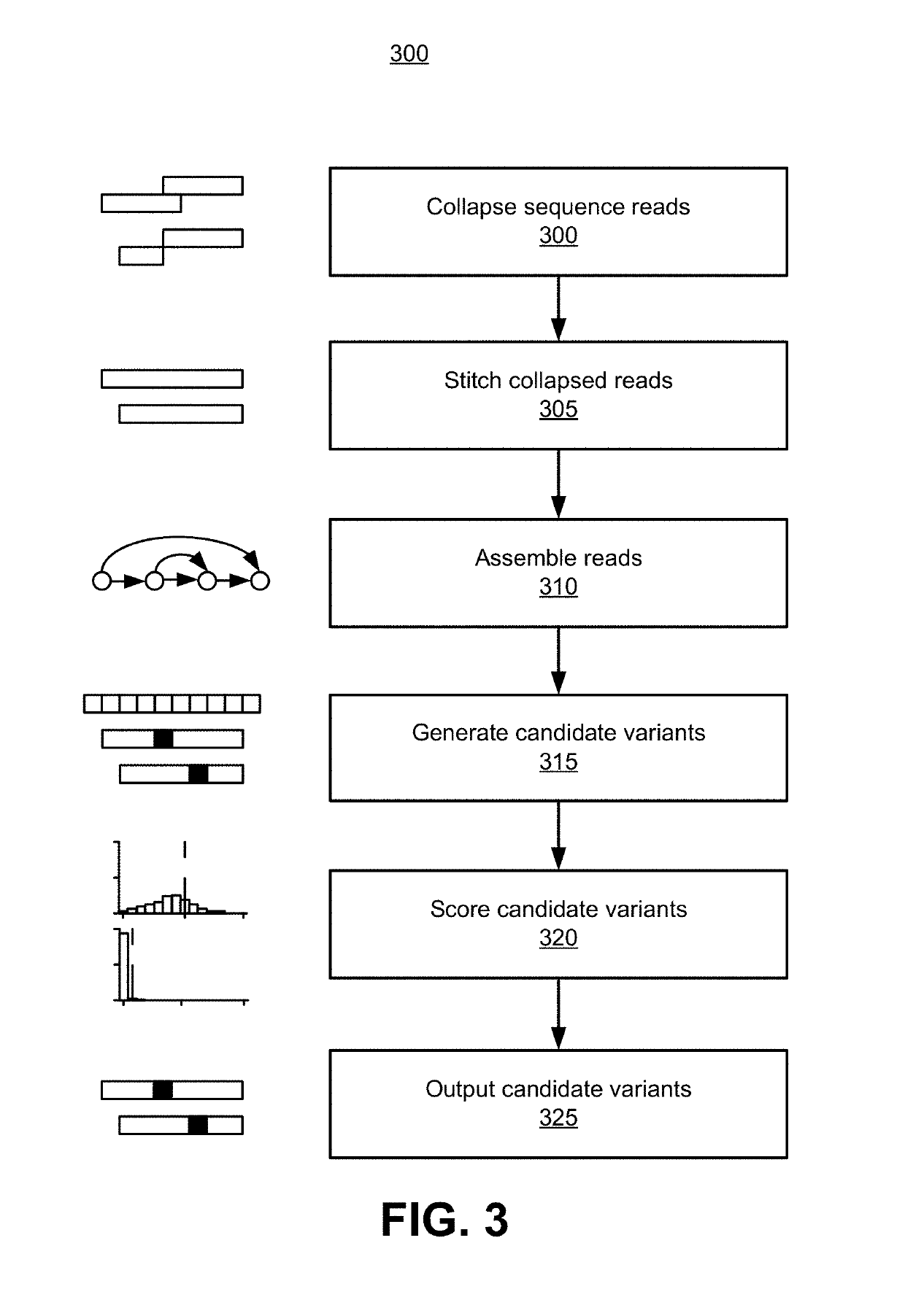Site-specific noise model for targeted sequencing
- Summary
- Abstract
- Description
- Claims
- Application Information
AI Technical Summary
Benefits of technology
Problems solved by technology
Method used
Image
Examples
example mean
VI. F. Example Mean Calls
[0139]FIG. 15 is a diagram of mean calls per sample using a SNV BH model, Indel BH model, or no model across sample targeted sequencing assays according to one embodiment. The example results for both SNV and indel type mutations shown in FIG. 15 were obtained from targeted sequencing data from healthy subjects and cancer patients (having breast, lung, or prostate cancer). In addition, the example results were obtained using targeted sequencing data from Study A and Study B, as indicated. In some embodiments, a “No Model” method uses a manually tuned filter to set thresholds, e.g., to filter for variants having an AD greater than or equal to 3 and an AF greater than or equal to 0.1. The results determined using the BH models indicate improved sensitivity relative to the baseline results that did not use the model. For instance, in the breast cancer sample in Study A for a SNV model, the baseline number of mean calls per sample are 179 and 16 for “No Model 1”...
example mutations
VI. K. Example Mutations Retained
[0147]FIG. 22 is a diagram of filtered recurrent mutations from cancer samples using an Indel BH model according to one embodiment. The example results shown in FIG. 22 were obtained from samples of subjects having breast, lung, or prostate cancer and using target sequencing data from Study B. The results show that the “BH_gDNA” assay using the model retains recurrent mutations found in cancer samples, as do the baseline “No Model 1” and “No Model 2” assays.
[0148]FIG. 23 is a diagram of noise rates for indels determined using an Indel BH model according to one embodiment. The example results shown in FIG. 23 were obtained using targeted sequencing data from Study B for a healthy sample having a depth of 3000. Further, the results show that short indels (e.g., of length −2, −1, or 1) dominate the mean expected AD, while typical noise rates for longer indels are low.
VI. M. Example Indel Noise
[0149]FIG. 24 is another diagram of...
PUM
 Login to View More
Login to View More Abstract
Description
Claims
Application Information
 Login to View More
Login to View More - R&D
- Intellectual Property
- Life Sciences
- Materials
- Tech Scout
- Unparalleled Data Quality
- Higher Quality Content
- 60% Fewer Hallucinations
Browse by: Latest US Patents, China's latest patents, Technical Efficacy Thesaurus, Application Domain, Technology Topic, Popular Technical Reports.
© 2025 PatSnap. All rights reserved.Legal|Privacy policy|Modern Slavery Act Transparency Statement|Sitemap|About US| Contact US: help@patsnap.com



